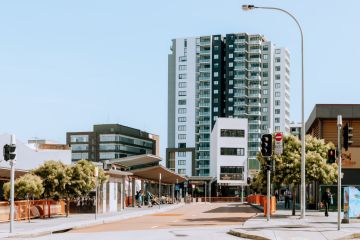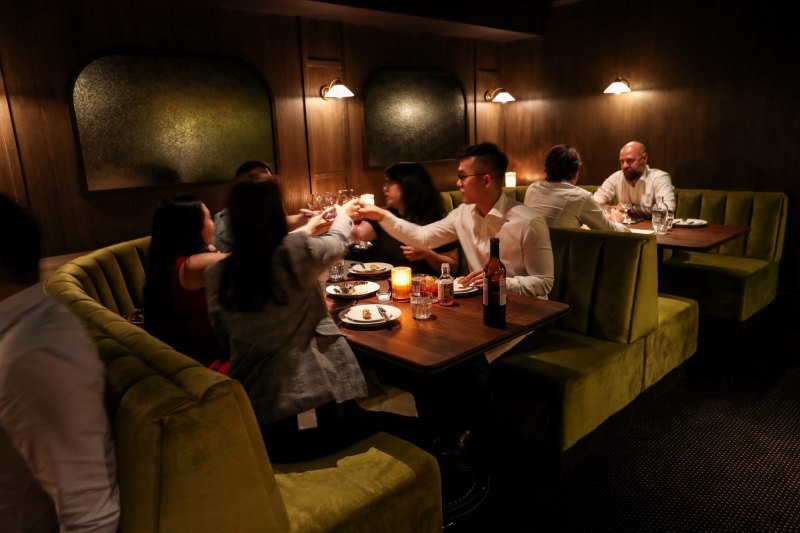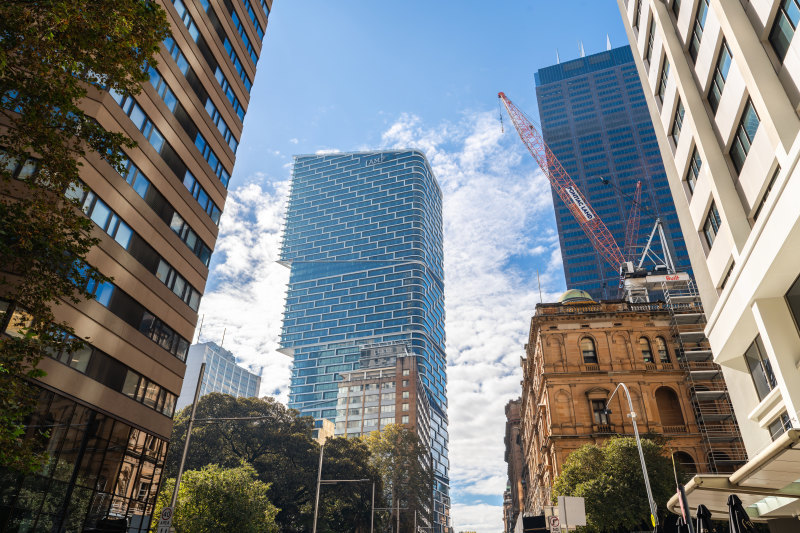'Binary House': The asymmetrical beauty created on a stringent budget
Building to an agenda that emphasises economy doesn’t have to result in something that looks bland or mean.
Indeed, it was a stringent budget that had architect Christopher Polly advocating to keep costs down by fixing rather than bowling over a 1960s, yellow-brick bungalow in Woolooware. It’s a suburb where similar houses are falling like nine-pins to townhouse developments, Polly says.
“I saw value in the yellow-brick quality that most people think is too ugly to retain. I saw keeping the old bit as a positive,” he says.
Floor plans were revised, floorboards were replaced with handsome, grainy blackbutt, and new skylights and black windows were added in old openings.
The little house was buffed to become “the cellular and private space” – containing three bedrooms and two bathrooms – to the domestic two-parter Polly has christened “Binary House”.
Moving from the compression of the front hall through a glazed connecting passage between two courtyards, the new step-down public space – comprised of living, kitchen and mezzanine sitting areas – you’ll enter the interestingly-vaulted extension, where it’s damnably difficult to spot any spending limitations.
Suddenly, the room volume lifts to 5.8 metres in the cool, contemporary “garden room,” displaying all sorts of asymmetries that look like a million bucks. There is generous proportionality here, and a pure elementality to all built forms and their placement.
- Related: The home renovation completed by Airtaskers
- Related: The townhouse busting free of beige surrounds
- Related: The home where natural materials take centre stage
“Part of that comes down to the cost,” the architect says.
“The [trick] was to create each part as a singular element. We really pushed economical material to achieve a high-end result”.
As an example, Polly points out “a singular flight of stairs framed up in pine as an inexpensive way to make a stair”. That the balustrades were kept solid, even if in hoop pine ply, makes it sculptural.
The open-back flight keeps sight lines open, leading to an open-sided room above the kitchen that could one day become another bedroom.
While Polly is pleased with the visual weight of the form-poured concrete wall, all sorts of other features add up to a convincing argument for why it’s worth factoring architectural fees into even a modest project. These include the pinched-in points in the floating concrete deck, and the lofty over-mantling roof that shelters it from the western sun.
It’s a subtle but crucial part of a scheme that holds together a well-composed room.
We recommend
States
Capital Cities
Capital Cities - Rentals
Popular Areas
Allhomes
More







